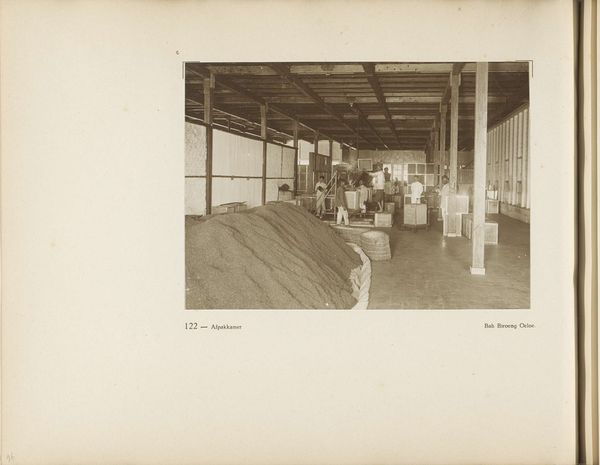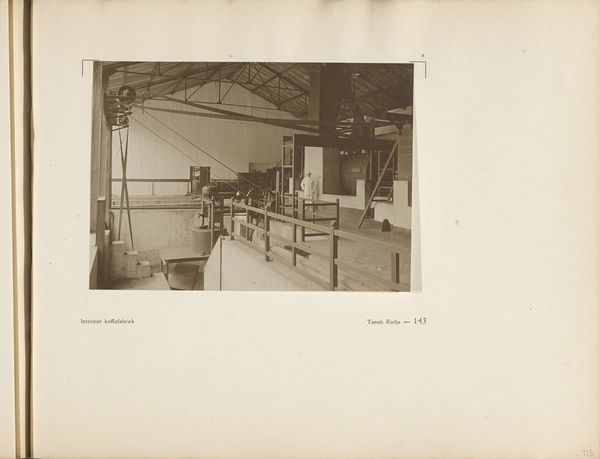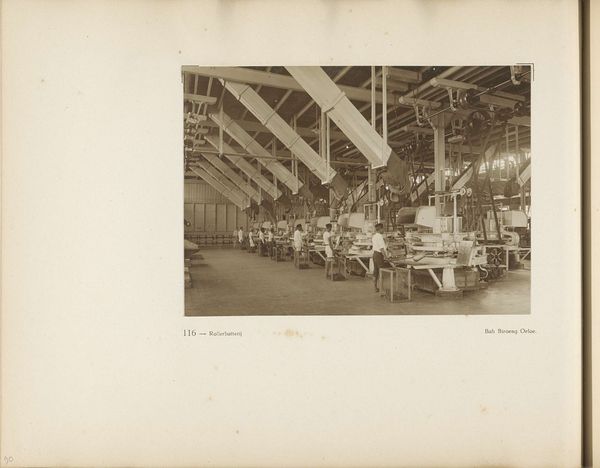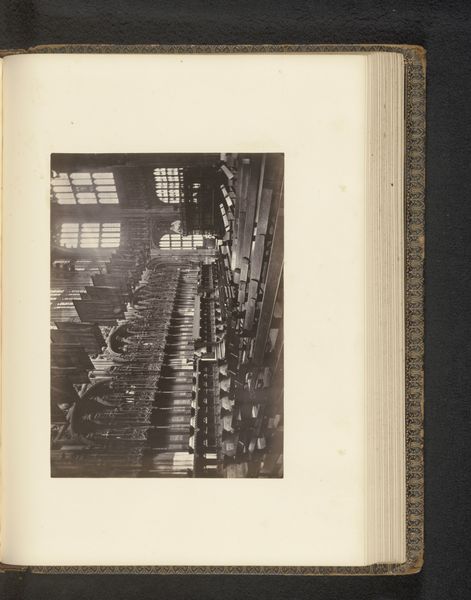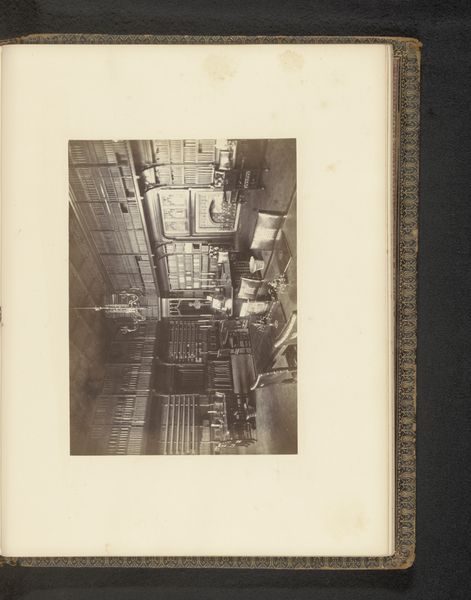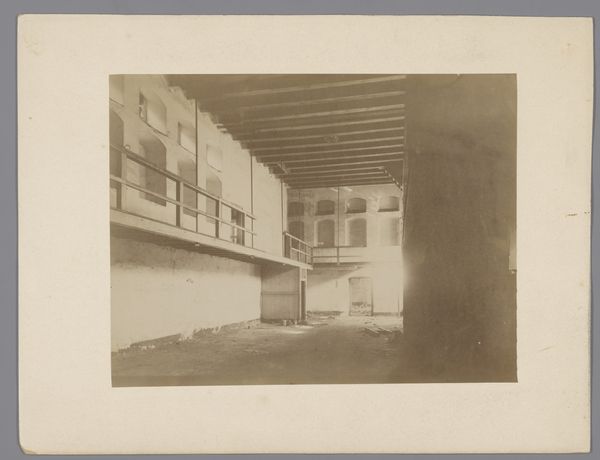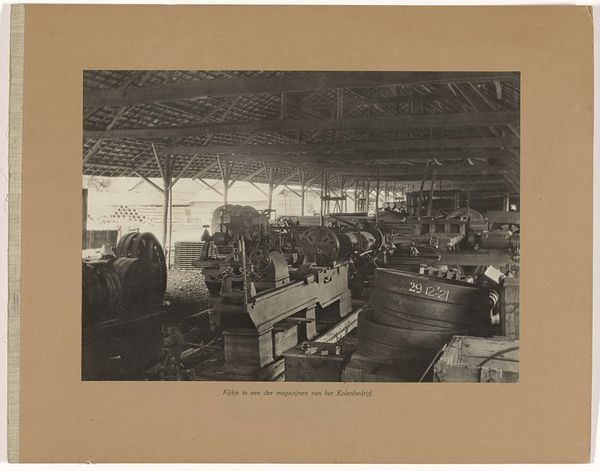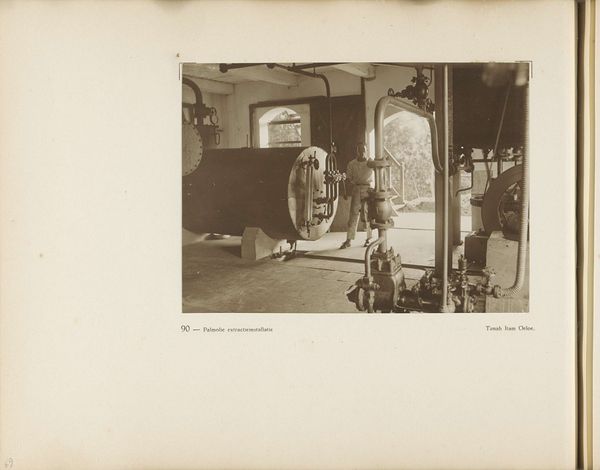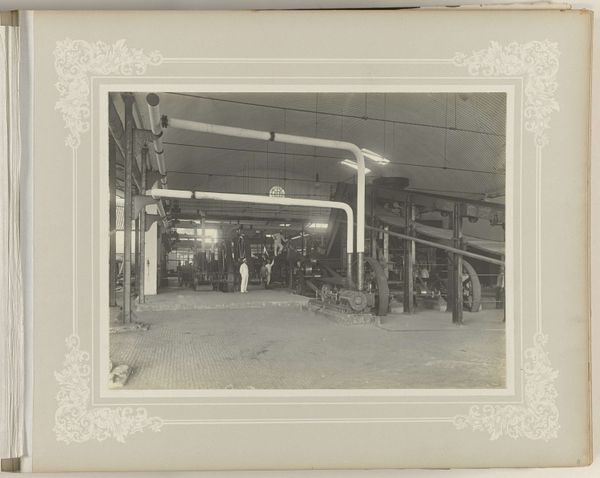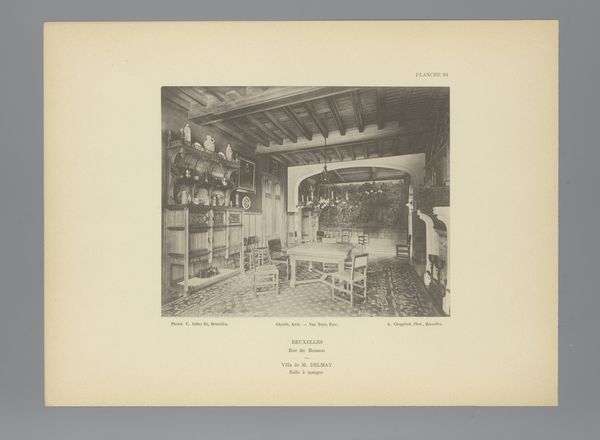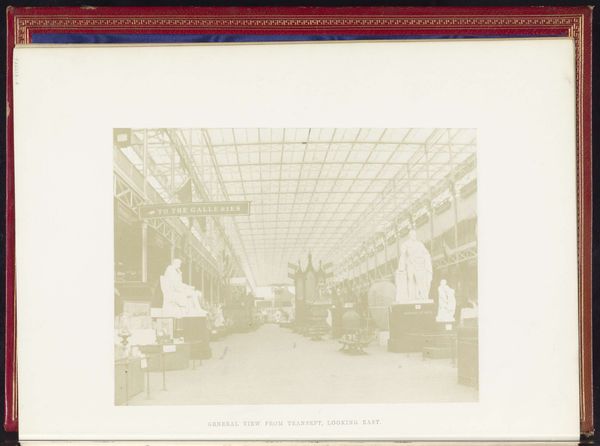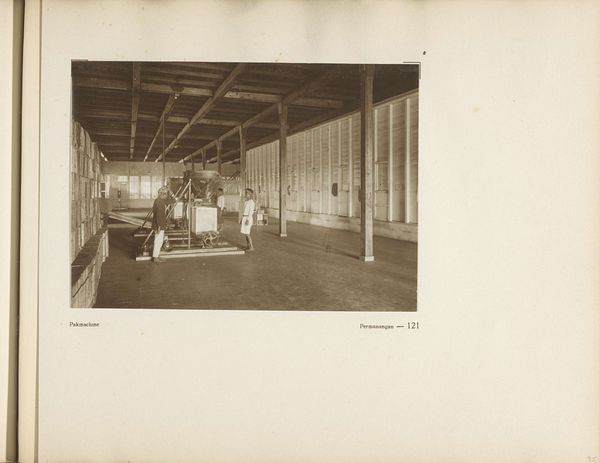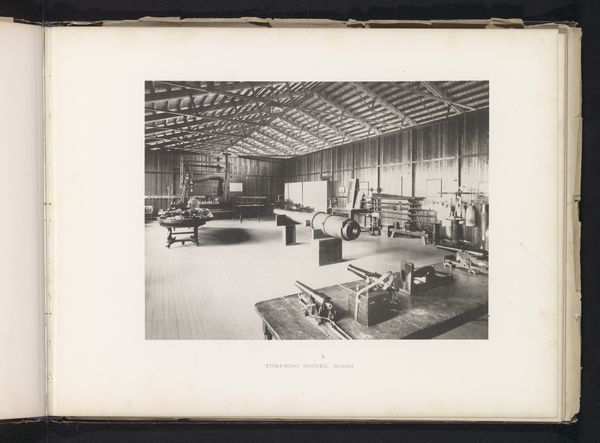
Pagina 153 van fotoboek van de Algemeene Vereeniging van Rubberplanters ter Oostkust van Sumatra (A.V.R.O.S.) c. 1924 - 1925
0:00
0:00
jwmeyster
Rijksmuseum
photography, gelatin-silver-print
#
dutch-golden-age
#
landscape
#
photography
#
gelatin-silver-print
Dimensions: height 240 mm, width 310 mm
Copyright: Rijks Museum: Open Domain
Curator: Welcome. We are standing before "Pagina 153 van fotoboek van de Algemeene Vereeniging van Rubberplanters ter Oostkust van Sumatra," a gelatin-silver print made around 1924 or 1925. Editor: The sepia tones lend an air of distance, a bygone era, and I must say there’s a certain austerity to the composition, isn't there? The eye is drawn through the linear structure of the factory interior. Curator: Precisely. Note the use of light and shadow to create depth and guide the viewer. The formal repetition of the shelving structures and the rhythm they create reinforces the mechanical aspect of labour depicted. Editor: And it’s within that precise visual order that a complicated narrative resides. The photo depicts labourers on what was likely a Dutch plantation in Sumatra. The organization, the rows, are all functions of colonial capitalist control, documenting industrial productivity—a stark contrast to, say, idyllic landscapes. Curator: A crucial perspective. What I also find intriguing is the photograph’s tonal range. Look how subtly Meyster modulates the shades, creating depth within the factory space. Semiotically, we can read it as a contained ecosystem. Editor: I see it as a contained exploitation system. Who were these people, and what were their lives truly like within this 'ecosystem?' This image isn't merely a neutral observation of industrial efficiency. It’s implicated in systems of power. Curator: Indeed, that interplay between surface beauty and underlying meaning creates a palpable tension. Consider the arrangement of figures—gestures and attitudes of labour repeated throughout the structure of the composition. Editor: Those workers are, sadly, reduced to mere components within the broader industrial structure. This photo serves as a potent reminder of the human cost frequently obscured by narratives of economic advancement, in this case of the Dutch Golden Age in landscape format. It makes you think about whose stories are prioritised and who is left to the shadows of archives. Curator: Absolutely. Thank you, that has given me an opportunity to see how this photograph engages far more deeply with societal discourse, when one looks closely at the details. Editor: A fruitful conversation, reminding us that even the seemingly simple images carry complex narratives that challenge the viewer to rethink assumptions.
Comments
No comments
Be the first to comment and join the conversation on the ultimate creative platform.
